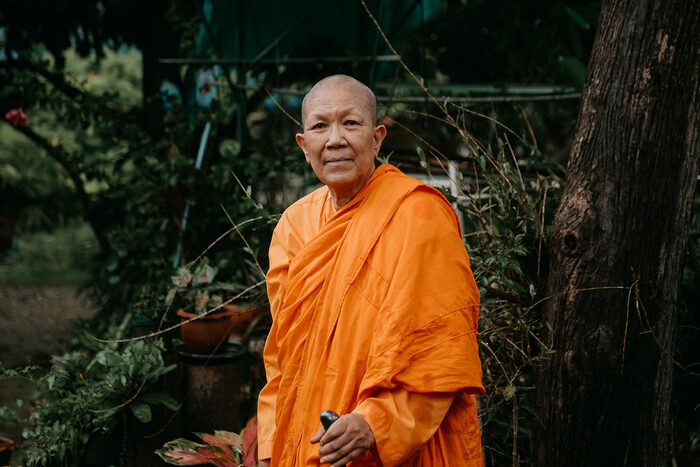
Bangkok is a metropolis renowned for its traffic, and so it is with some trepidation that I start my journey out of the city for what should be a 90-minute journey, but which, by many accounts, could take up to 3 hours. This interview had already been beset by problems – a fractured ankle and last-minute missing equipment had already delayed the meeting twice. But as luck would have it, everything went smoothly.
And on this tranquil afternoon in Nakhon Pathom, the rapturous hum of daily life receded as I stepped into the serene grounds of the Songdhammakalyani Monastery. Here, amidst the whispers of rustling leaves, the gentle growls of the temple dogs, and the timeless chants of the Pali canon, resides Dhammananda Bhikkhuni, a figure of quiet yet profound revolution in Thai Buddhism. With her shaven head and saffron robes, she embodies a living testament to the enduring spirit of perseverance and faith.
Born Chatsumarn Kabilsingh, Dhammananda Bhikkhuni was raised in a household steeped in academic and spiritual richness. Her mother, Voramai Kabilsingh, was herself a trailblazer, becoming the first Thai woman to don the yellow robes as a novice nun. Educated in Thailand and abroad, Chatsumarn embraced academia, earning a Ph.D. in Buddhist Studies from Magadh University in India and becoming a respected professor and author. Yet, her journey towards spiritual fulfillment called her beyond the confines of the classroom.
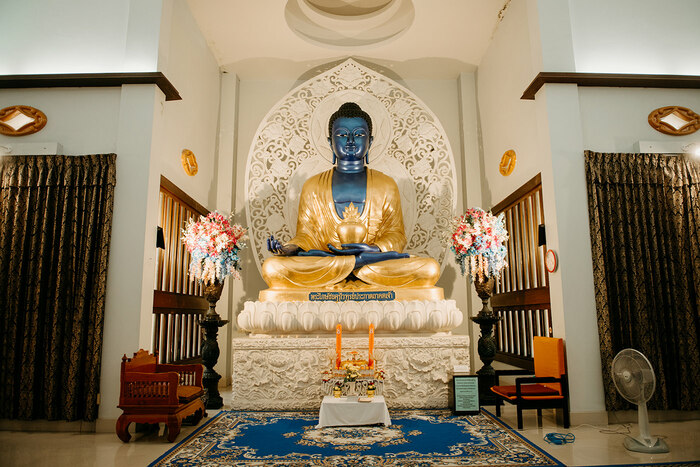
In 2003, defying centuries of patriarchal tradition, she was ordained as a bhikkhuni in Sri Lanka, becoming Thailand’s first fully ordained Buddhist nun. This act was not merely a personal milestone but a seismic shift in the religious landscape of Thailand, challenging the long-held belief that women not only could not, but should not, be given full ordination. Her ordination ignited a movement that would see the gradual emergence of the bhikkhuni sangha, the female monastic community, for the first time ever in Thailand. Despite their historical importance, bhikkhunis are still frequently seen as subordinate to their male counterparts. Yet, figures like Dhammananda strive to break these barriers, cultivating communities of learning and spiritual growth across Thailand and reclaiming their rightful place within the Buddhist sangha.
In our interview with Dhammananda Bhikkhuni, our conversation traverses the contours of her life’s work, the history of Buddhism in the region, the rich traditions surrounding death and funerals in Thailand, and much more. Enjoy!
Study Buddhism: Your mother, Voramai, was considered to be the first modern Thai nun after becoming ordained in the Dharmaguptaka lineage in Taiwan in 1971. How has her unique path influenced your life?
Dhammananda Bhikkhuni: My mother had a very interesting background. She was a feminist! She did not identify herself as one, as that term was not known at her time. But I think she was a feminist and she proved it with her teachings and actions: she cycled from Bangkok to Singapore, and it took her 29 days as the only female member of the local Scout troop! Imagine, in those days! She wanted to teach her students that women can do the same things as men.
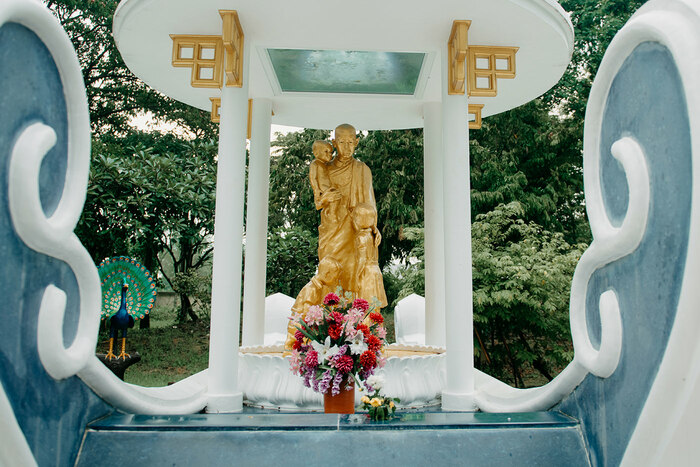
When she was studying Buddhism, she realized that while ordination was not given to women in Thailand, it was actually given by the Buddha. So, she was the first woman in Thailand to start looking for ways to become fully ordained. This is how she ended up in Taiwan, where she could become properly ordained. And here in Thailand, she had already prepared the ground for this temple, next to the highway. I'm very lucky and very grateful to my mother for having such farsightedness to buy this piece of land.
You had a very successful career in academia when you decided to become ordained. What spurred this decision?
My goal was to start a Sangha because the Buddha said that with the Sangha, Buddhism can continue on into the future.
I think everyone who knew me expected that I would take over my mother’s temple, but for a long time, I was just not ready. I thought, if you’re to lead an ordained life you must be very committed yourself. You cannot just simply become ordained because people expected you to do so. So, I waited. I have three sons, and when my youngest one was 24, I could rest assured that they were all on the safe side.
Still, I was enjoying my life as a professor. I was also working in television and generally experienced a very colorful life. But there was one day when I was putting on makeup in the morning, I saw my reflection in the mirror, and somehow there was that voice asking me, “How long do I have to do this?” I consider that a turning point, that I knew I had to commit. I thought that now I must commit to doing something that is more important than myself.
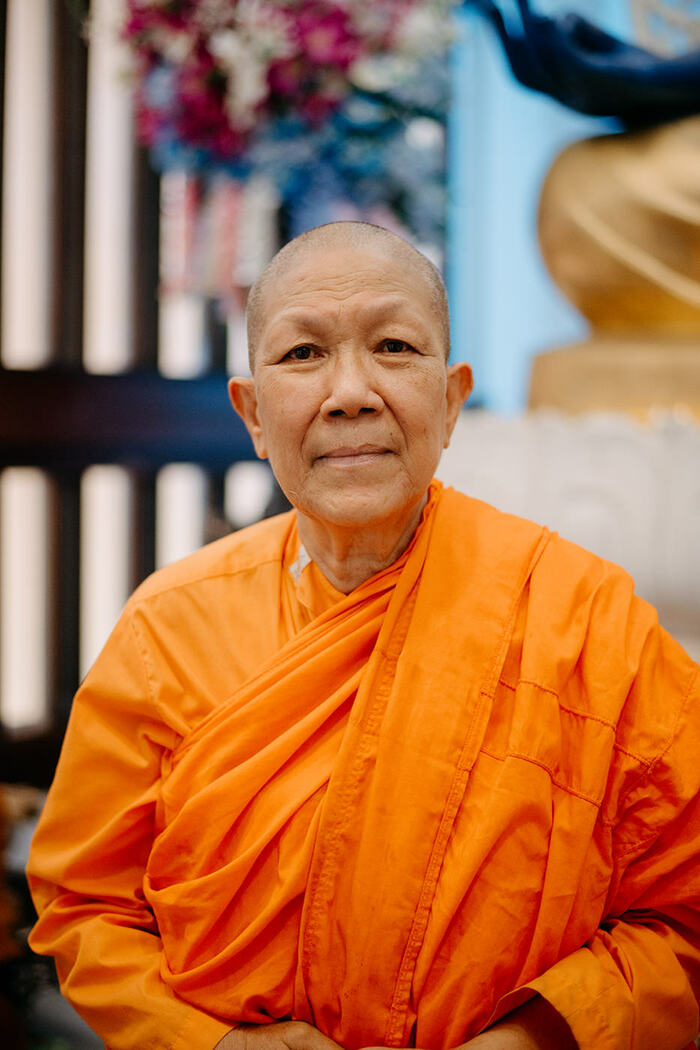
Another turning point came when I was invited to Harvard University to a conference on women, religion, and social changes. It was the first time I was exposed to Western feminists. It hit me hard that I am a scholar in my own country, having all the information about women and about ordained women, but as an academic I was hiding myself in an ivory tower, not doing anything to bring about real social changes.
So, I was ordained in my 50s, in 2001, as a sāmaṇerī, which is a lower type of ordination. I was then fully ordained in the year 2003, and from then onward, we now have more than 270 ordained women in Thailand. It has taken 20 years to spread to different parts of the country.
You mentioned that you have three sons. What was their reaction and the reaction of your other family and friends to your ordination?
My family must have guessed that this would be the path of my life. Although it didn't come as a surprise, it was still a difficult adjustment in the beginning. My sons felt that they had lost their mother because they did not have as easy access as they were used to, so it took a couple of years with that adjustment. But it was, in fact, actually my sons who initially talked my ex-husband into allowing me to lead my life and divorce me so that I could prove, when I went for ordination, that my marriage would not become an obstacle to my ordination.
Could you delve a little bit into the absence of the bhikkhuni ordination in Thailand? Did the practice of fully ordain nuns ever exist in Thailand’s history?
Following my ordination, some people said, “Oh, bhikkhunis have already died out.” I said, “Not possible. They never arrived; how could they die out?!” Way back from the Buddha’s times, the bhikkhuni lineage lasted more than 1000 years. In India, it was between the 11th and 12th centuries that it died out together with the bhikkhus, the monks. In Sri Lanka, the lineage died out in 1017, when the country was invaded by a South Indian King. There were bhikkhunis only in these two countries, but I must add that from Sri Lanka, the lineage also travelled to China, even if it never came to our Southeast Asian countries. So, we never had fully ordained women in our country.
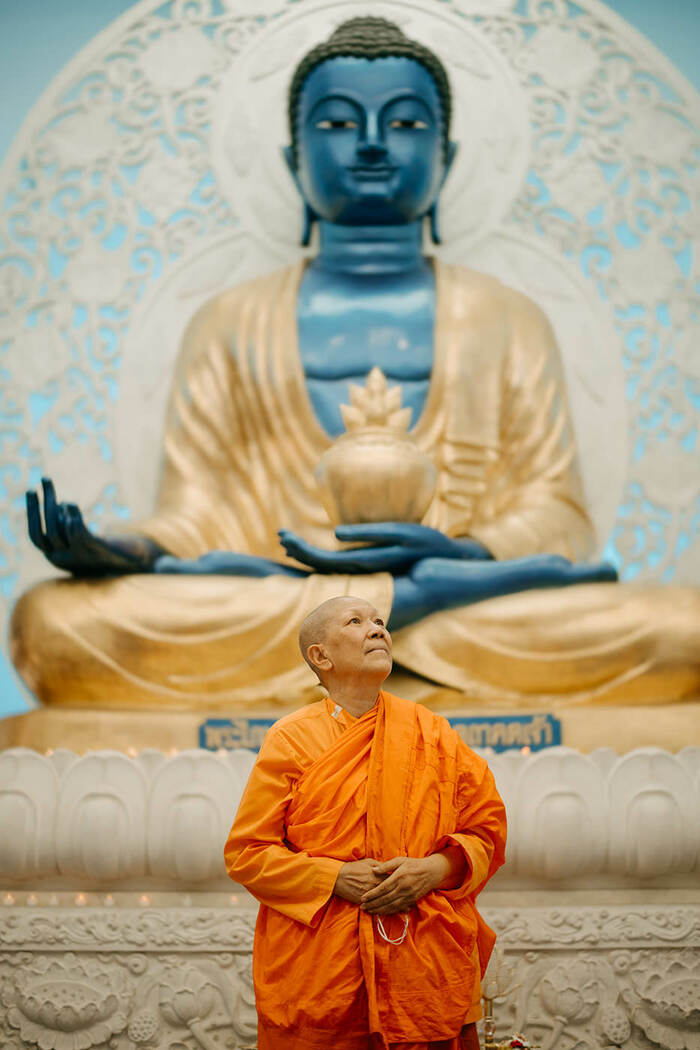
I never thought that I would see Theravada bhikkhunis in my lifetime in Thailand. I did not imagine when I was studying that I myself would actually be part of this history both for Buddhism and also for Thailand as a country.
What motivated you in your fight to forge ahead with this path?
I felt strong faith in the Buddha. I thought, if this ordination was established by the Buddha himself, how come we are not doing anything about it? I felt committed and felt that this was my duty, my responsibility to do it. I never wanted to be the first one! I wanted to follow, but there was no one walking ahead of me in my country apart from my mother. But if I was the only one who actually had all the knowledge about ordained women while sitting there quietly, not doing anything, how are we going to bring about the social changes? I felt responsible also to bring about social changes and felt particularly responsible to fulfill the fourfold Buddhist communities started by the Buddha.
What are the fourfold communities of Buddhism And what is their role in the continuation of the Dharma?
The fourfold Buddhist communities were established in the Buddha's times and consist of bhikkhus or monks, and bhikkhunis or nuns or female monks, and lay men and women. These are the four groups of Buddhists that the Buddha stated would enable the teachings to continue into the future.
At the time of his enlightenment, Mara came to the Buddha and told him to pass away, now that he was enlightened. The Buddha said, “Not yet, not until I establish the fourfold Buddhist communities.” After 45 years, towards the end of the Buddha's life, Mara appeared for the second time, reminding the Buddha that now his fourfold Buddhist communities were well-established, he should pass away. So, that was a confirmation from the mouth of Mara that the fourfold Buddhist communities had been well-established. On this occasion, the Buddha accepted the invitation from Mara, and three months later he decided to pass away.
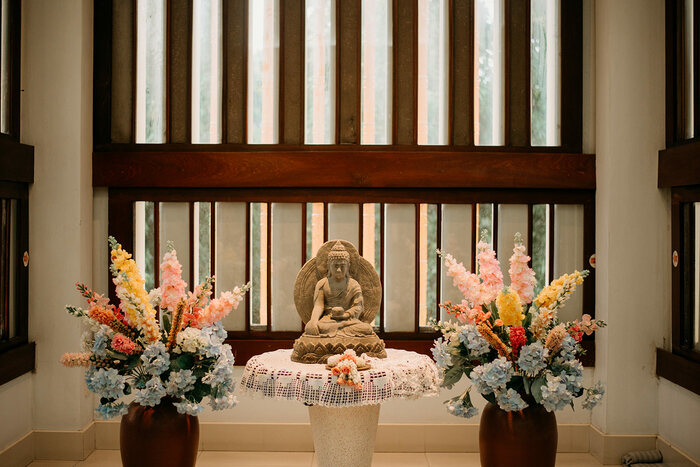
There was yet another conversation with another monk who asked the Buddha, “What would be the reason for Buddhism to decline?” The Buddha said that if at some point the fourfold Buddhist community doesn't respect the Buddha, Dharma, and Sangha, and if they don't study and don't respect each other, then Buddhism will decline. So, Buddhism does not solely depend on bhikkhus or bhikkhunis alone, but all four groups together must bear the responsibility.
Considering the importance of bhikkhunis, then, as one of the four Buddhist communities, what kind of reactions did people have upon seeing you in robes?
In the beginning, I noticed that people had three different types of reactions upon seeing me. Some people turned their backs and criticized, some people were accepting of it, and some people were very happy.
We have to make a differentiation between Buddhist culture and Thai culture. Ordained women are very much part of the Buddhist culture, but not of Thai culture. Lots of people take it for granted that the civara, the robe we wear, is meant only for men. They really reacted very negatively, saying, “How dare you wear the civara?” But some came close and asked, “Can I touch you? Can I touch the civara?” It's very moving to see old ladies coming to touch the civara to confirm what they were seeing. But now, people seem to just take it for granted that we have ordained women.
What is the situation at present regarding the full ordination of women in the other southeast Asian countries of Myanmar, Laos, and Cambodia?
Although it is not in Southeast Asia but just recently, in 2022, Bhutan organized full ordination for nuns for the first time. They belong to a different tradition, to the Mulasarvastivada tradition. I'm very happy because Bhutan also didn't have the lineage until now.
I heard too that in Cambodia, women are starting to be fully ordained, especially some women who have returned after being educated in Western countries. I have already seen the photo of these Cambodian bhikkhunis. It has not yet happened in Laos or in Myanmar though. I think if the women themselves are ready to come forward, it is possible among these three countries to start full ordination. I think slowly, slowly, it will happen.
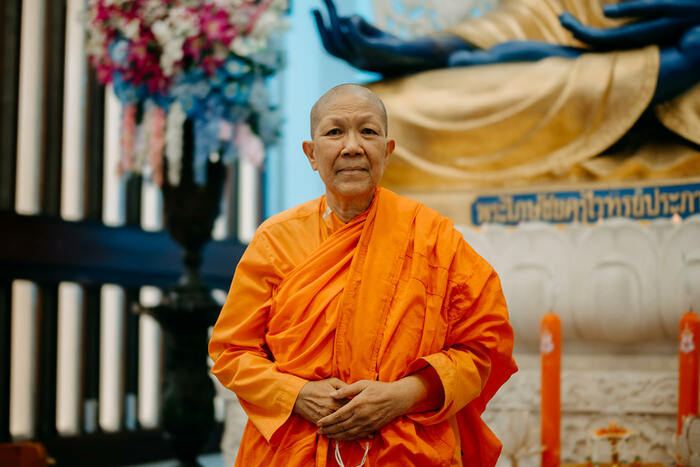
Actually, from Myanmar, there was a woman who was ordained together with me. Same time, same year, in 2003. She was studying for a PhD in Sri Lanka at the time and got ordained there. But when she went back to Myanmar, she asked the Sangha there to accept her, and the Sangha refused. In fact, they wanted her to sign a paper stating that she is not a bhikkhuni. She said she could not sign any such paper because she was, in fact, a bhikkhuni. So, they put her in prison for 76 days. She was in prison for 76 days! Eventually, her eldest sister helped her out, and then she moved from Myanmar to the United States. And eventually, I'm sorry to say, she disrobed. But her eldest sister is still ordained as a sāmaṇerī and doing social work quietly in Rangoon.
What exactly is the main objection from the Sangha in these countries?
I have to be very, very frank, as an academic. They reject the full ordination of women because they have not studied the Dharma texts sufficiently. They need to study the texts sufficiently in order to come with open eyes and realize, “This is what the Buddha established. Why would we, the monks, not continue with what the Buddha already gave the women, this lineage?”
So, well-read senior bhikkhus should start giving the ordination, and then let's see what the others say. If you have done your studies very well, you can quote page to page that the Buddha allowed bhikkhus to give ordination to women, and so they should be happy that they are continuing what the Buddha taught.
We, as women ourselves, cannot ordain. We have to wait for the senior bhikkhus to come together. That's why we have to travel; we have to go to Sri Lanka or go to India.
How did Buddhism spread to Thailand? And does Thai Buddhism have any special characteristics?
Historically, the Thai Sangha was started by the Sri Lankan Sangha during the 13th century. Thai monks travelled to Sri Lanka to become ordained in the Sinhalese Mahavihara Theravada sect (known as Lankavamsa.) After some time, the Lankavamsa lineage died out in Sri Lanka, so the monks had to come and receive the lineage back from Thai monks, and so now they are called Siamvamsa. So, the Thai and Sri Lankan Sanghas are very closely connected. Even at my ordination, the senior monk asked me to hoist flags. There was a Thai flag, a Sri Lankan flag, and a Buddhist flag.
Before Buddhism, we were animistic. We believed in spirits, and so for instance, as you entered a home you had to pay respect to the spirits of the house. Then, when one’s parents died, you also paid respect with ancestral worship. When you started a paddy field, you had to pay respect to the gods of the paddy field. It was like that.
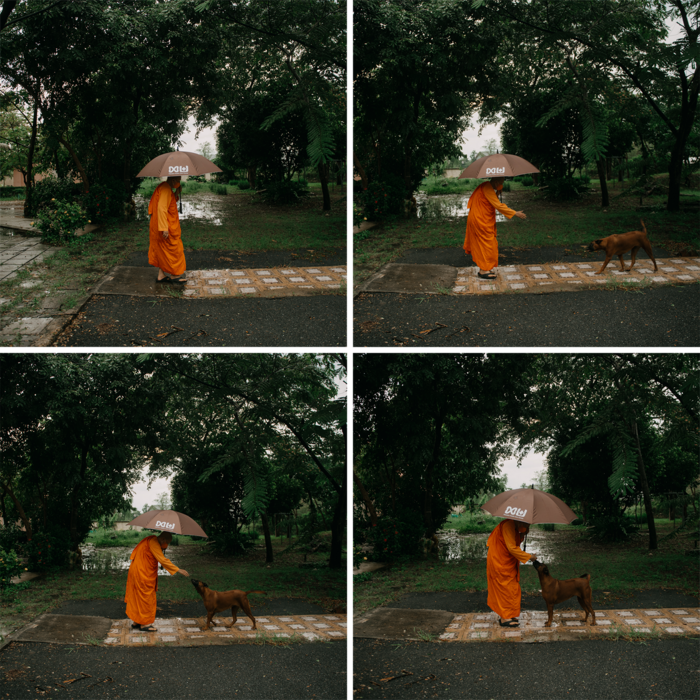
And although we were animistic, because Buddhism is very open-hearted, when it arrived, we became Buddhists, but at the same time we remained animistic. Then Brahmanism came through traders, so we also received the teachings of the Buddha through Hinduism, or the cloak of Hinduism. So, we have at least three different traits that combined together into what we call Thai Buddhism.
The part that is Thai is very little. Generally, we do try to observe the precepts. I think even the general public know about the five precepts, but whether they keep them or not, that is another thing! They might know the five precepts, but very seldom that they would have understood the main goal of bodhichitta. For them, they might think this concept is kind of Mahayana, but actually all of us have to start with bodhichitta or bodhibija, the seed of enlightenment. Actually, if each one of us, in all the traditions, if we really understand the teachings well, we will know that we are talking about the same thing. We might use different language, but we are talking about the same thing. It is not something different at all.
There are two orders of Theravada Buddhism in Thailand: the widespread Mahānikāya order and the newer Dhammayut order, which you follow. What are the differences between them and how did the Dhammayut order come about?
When King Mongkut of Siam, also known as King Rama IV, became ordained, he wasn’t very happy with the attitudes of the monks in Thailand at that time. He wanted monks to be stricter, and so he founded the Mon lineage as a reform movement to reinforce the Vinaya rules. This order became called Dhammayut. The existing Buddhist order is the Mahānikāya, and still around 90% of the full population of monks in Thailand, that is around 300,000 monks, belong to the Mahānikāya order. And out of this 300,000, about 10% belong to the new order, the Dhammayut nikāya.
Both orders read the same texts, and the differences are only in minor practices. In the Dhammayut order, for instance, when monks go out to collect alms, they don't wear shoes, they don't wear flip-flops; whereas in Mahānikāya they can wear flip-flops. Or in the afternoon, if a Mahānikāya monk comes to you, you can offer coffee with milk. But if a Dhammayut monk comes for a visit, you don't put milk in their coffee. Very minor details. The teachings of the Buddha that they follow are all the same, but still these orders insist on having separate Sanghakamma. All our later kings when they were ordained, they belonged to Dhammayut.
Just as Dhammayut is regarded as a reform movement, you continue to call for reform both for monastics and lay people. What aspects of Buddhist practice do you think need to be reformed?
I think a part of it is because I am an academic. When you read the Buddhist texts, you realize that what we practice in the general public is not really matching with the original teachings. We should be as close as possible to the spirit given to us in the texts.
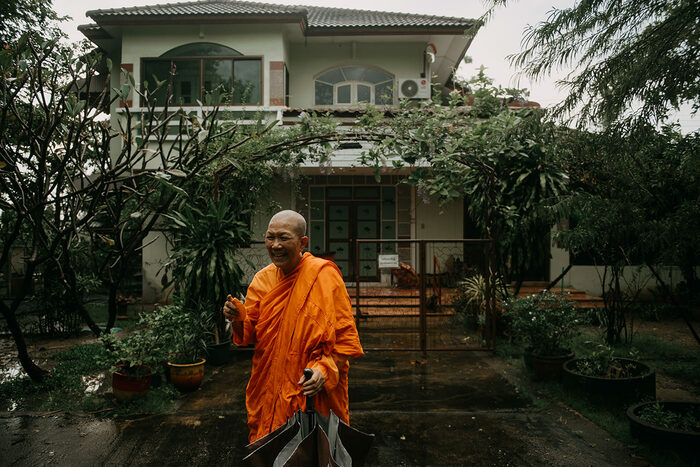
When we read the texts, particularly the Vinaya, we have to understand the spirit of these monastic rules. Let’s not just pay attention to the words, because with words only, we cannot do much in this world. In today’s world, there are some rules we cannot always keep as a precept, such as the precept of not travelling by vehicles. We should understand what the spirit is, which is that we should not travel like rich people, being carried by others, as it was in the time of the Buddha. The Buddha gave up his title as a prince, so he didn't have to be carried around by other people. In other words, he gave up that kind of vehicle. So, we really have to understand the context of the time and the context of the rule. I often say, “Follow the Vinaya by understanding the spirit of the Vinaya.” Otherwise, we tend to follow only the words, and some of them are next to impossible!
Talking of rules, could you tell us about the importance of the five precepts?
When you become Buddhist, first you recite, “I take refuge in the Buddha, I take refuge in the Dharma, I take refuge in the Sangha.” This is the first step. It is like the declaration that now you are becoming a Buddhist. We repeat the sentence three times. Why three times? To confirm that we really want to take refuge in the Buddha. And then after that, the bhikkhunis or the bhikkus give you five precepts as a moral code of conduct.
The five precepts are: not to kill, not to steal, not to have sexual misconduct, not to tell lies, and not to take intoxicants. These five precepts basically appear in Islam and also in Christianity’s ten commandments. It is the moral standard of all religions.
The five precepts started out similarly to how we advise children, “Don't do this. Don't do that.” Here, it’s all about us being compassionate. And most importantly it lets us love ourselves. So, I know others also love themselves, and that's why I don't kill. I like my own belongings. So, therefore, I know that others also must like their own belongings so I don't steal. So, we shift the statement. Instead of saying, “Don't do this, don't do that,” we say that if I truly love myself and my belongings, then I will understand that others also love themselves and their belongings. And so, we naturally wouldn’t kill others or steal from them.
You have written extensively on how nature is viewed in Buddhist literature, and you teach environmental sustainability, through recycling and other activities, at your monastery. Can you tell us about your work with environmental issues?
In 1985, I started a project called “Buddhist Perspectives on Nature.” As part of the project, I was researching different Buddhist texts, and I found that our texts are full of teachings about conserving nature. I wanted to start a temple where we can put all of these teachings into practice. We started simply with collecting plastics and paper, and now people come to deliver whatever they have collected from their own houses as recycling.
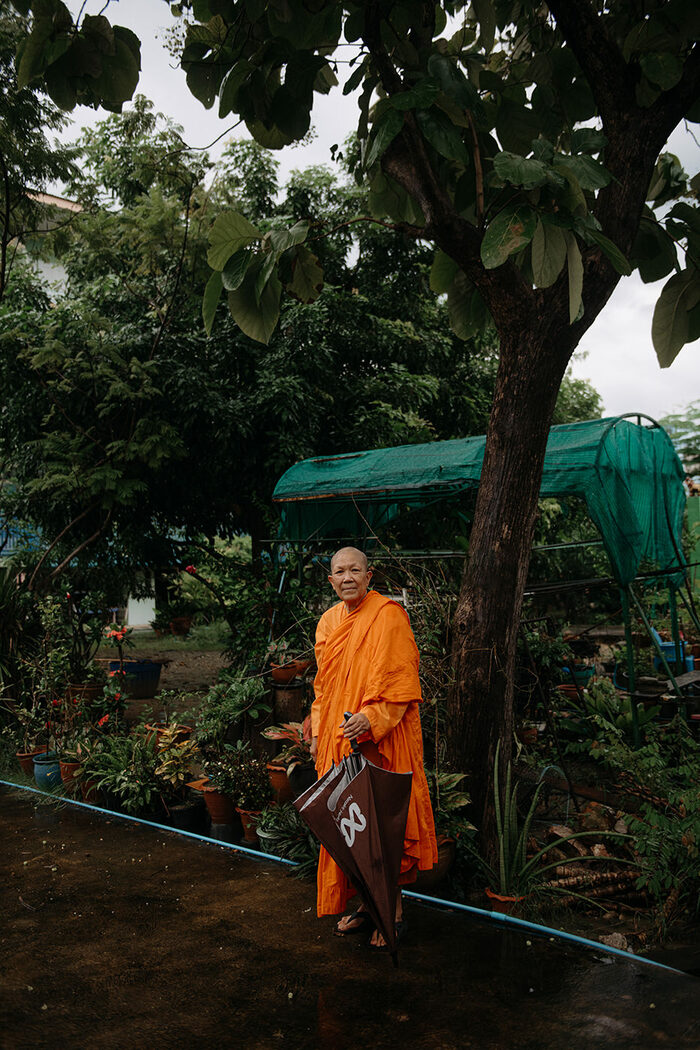
I myself like to weave what you call “rag rugs,” that is those rugs made from rags and plastics. I also try to encourage the nuns to see that recycling is possible. We do need to address this issue of recycling, which actually goes back to the understanding of Venerable Ananda in the Buddha’s times.
Venerable Ananda answered the question of a particular king, whose wife donated 500 robes to the monks, who wanted to know what Ananda would do with the robes. He told the king that the robes were distributed to monks in faraway places who didn’t have robes. “Then, what do you do with the robes?” the king asked. Ananda replied that after the robes have been worn and torn and cannot be used, they use them to cover the ceiling. “Then, what do you do with the robes?” Venerable Ananda told him that when the rags cannot even be used as rags anymore, they would be pounded, mixed with clay and pasted on the floor. The king was so happy about the monks’ efforts in nature conservation that he brought 500 more robes to offer to Venerable Ananda.
I tell this story to remind the nuns that the idea of recycling already existed at the Buddha's time 2600 years ago, and we should follow this tradition, particularly at this time when we are facing global warming and climate change. We are all responsible, and the least we can do is to start recycling!
You are also engaged with offering Buddhist education and solace to prison inmates. Can you tell us more about this?
Yes, we visit the inmates in the local provincial prison. There are 3500 inmates, out of which 700 are women, and we visit the women's section. However, we are not giving talks or lectures, as they are not interested in that. They like to just listen to us, talk to us, getting to know the Dharma.
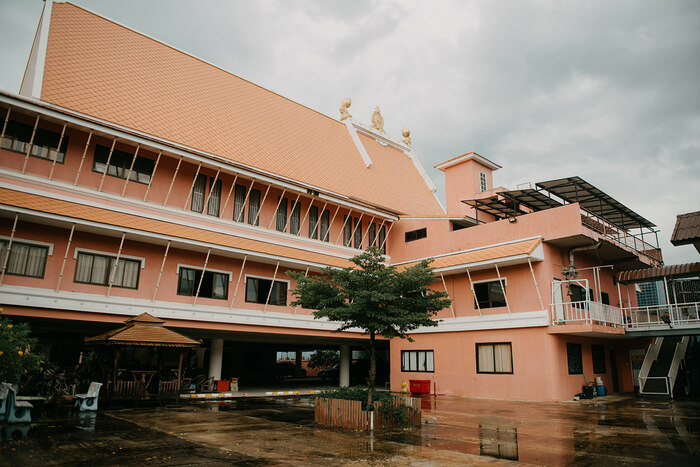
They are eager for us to come, because they feel that they benefit from our exchanges. When they practice what the bhikkhunis teach them, they can feel that life in prison, after all, is not so bad. One dying woman asked me to visit when she was about to pass away. I realized that our presence is very important for each one of them. She could not speak anymore, but she still recognized me when I visited her. Helping her towards a safe journey is the least we could do as bhikkhunis for the female inmates.
Preparing for and facing death is an important facet of practice in Buddhism. How can we overcome our fear or unease about the topic?
Some people think it is negative to think about death in our practice or in our daily lives. But life and death are present. As soon as we are born, death is waiting for us. But we tend to forget it, so we always welcome birth, but we do not welcome death, even though it is part of nature.
We should be peaceful and happy to live this life and peaceful and happy at having to depart. Just like when you’re travelling somewhere, you cannot stay sitting in the departure lounge forever, you have to depart at one point somewhere. So, when we recognize that death is part of nature, it's very important that we focus on the moment that we are living now, and that we make this moment most beneficial for ourselves and most beneficial to others.
Are there any special funerary customs in Thailand?
The length of the funeral process in Thailand has been shortened. Even in my mother's time just 20 years ago, we preserved her body for 100 days. Every night we were chanting for her, and after 100 days we took her body to be cremated in a large ceremony. There is also the tradition of publishing a Dharma book at this time to make merit for the deceased. That's one way of preserving Dharma, and if the person who died was from a large family, then the book would be very expensive and very valuable.
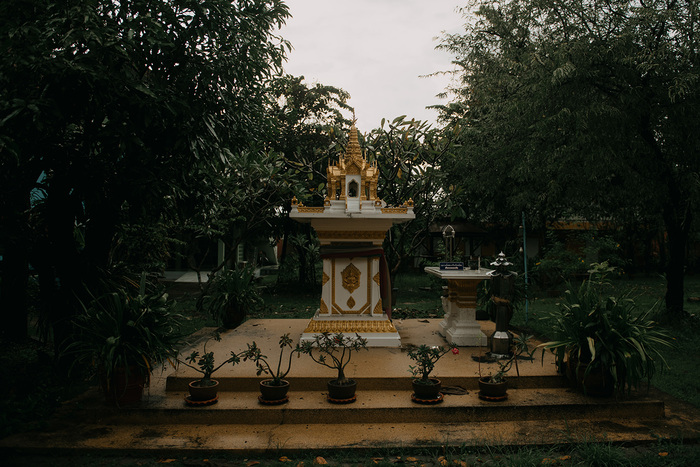
These days, due to economic pressures, people generally keep the body only for three nights, chant for three nights, and offer a small gift, but not publish books anymore. Still, some well-to-do families still publish Dharma books but much later, maybe three months later. Some people also ordain their sons at the time of the funeral. These funeral practices are more for the living than the deceased.
And, finally, what is the best piece of advice you have ever received from anyone?
To simply smile! Smile when you do something wrong, and the other person will smile too. I was listening to the previous Prime Minister of England, and she was talking about how she went to a dinner where she dropped a chunk of cheese in front of the Queen. She just picked up the cheese, put it back on the table and the Queen just simply smiled. That smile really speaks much louder than words. It is a recognition. It is a confirmation. It is forgiveness. Just simply: It's okay.
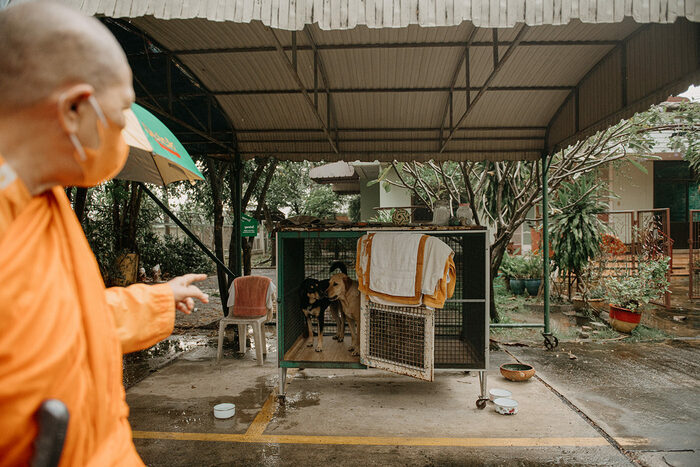
We are all human beings. If you have done anything wrong, it's okay. If you have done something good, it's also okay. You read it through the person's eyes. This is the teaching of a smile, a sincere smile. That is the greatest teaching and greatest message that one could give.
Thank you, Venerable Dhammananda Bhikkhuni, for sharing your unique life story and everything you’ve learned along the way with us!